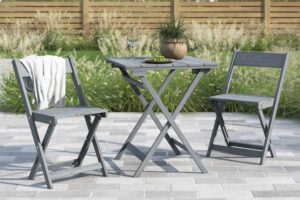Credit: architecturaldigest.com
The editorial business can often feel like a secret society with its own set of rules, preferred players, and obscure social codes that leave you wondering how to get published. The truth is the digital world is generally considered a meritocracy, a place where those who hustle but ultimately display talent and wit get the lion’s share of the Instagram likes. So it is at Architectural Digest. We’re always on the hunt for the next big thing, whether that’s the new white kitchen or the best-looking wallpaper around. If you think you’ve got it—the next big thing, that is—you’re going to have to work (with us) to get it published. It’s not necessarily hard work, but it does take some getting used to if you’ve never done it before. Here are seven tips for ingratiating yourself to editors—and mastering the publishing game.
Have a point of view.
Everyone loves a good white kitchen, but what’s so special about yours? Do you approach color in a different way? Or are you using materials that aren’t usually incorporated in the kitchen? Sometimes this translates into the wow factor, as in, “Wow, that wallpaper in the powder room slays.” Other times it’s a moment of surprise, as in, “Huh, I never thought to use an inverted rowboat as a cocktail table. Cool!” However, in these days of digital design frenzy, it’s not enough to present solely a pretty picture. Every story must also perform (or preferably out-perform) every article that came before it, so think about the impact your project will make. If it looks like everything else, it’s probably not going to make a splash on the internet. That’s what blogs, newsletters, and Substacks—and their more niche audiences—are for.
Survey the digital landscape.
Editors and freelance writers know that you never pitch a story without doing your due diligence. That is, you read voraciously, see what stories are landing where, and size up the competition. If your intended outlet has just published a story about a beach house in New Jersey, odds are they won’t be publishing another New Jersey beach house for a couple of months. (This is exponentially true for print stories.) Of course, there are always exceptions to the rule, but in general, editors try to offer their readers some variety. If you can get a feel for what’s missing in an outlet’s editorial schedule, you might be able to pinpoint something an editor is looking for before they even realize it.
AD PRO members enjoy exclusive benefits. Get a year of unlimited access for $25 $20 per month.
Tell a story.
We know most clients prefer to be anonymous, but there have to be some noteworthy aspects of the process that might be worth coaxing out and elaborating on, otherwise what are we doing here? (Some editors might call this the “Why do I care?” bullet, but that seems harsh. We prefer to ask: “What will keep readers scrolling down the page?”) Did you unearth a treasure trove during the demolition of a home, or perhaps you designed one room around the owner’s antique toy collection? Details like this are what make a story. Collect and protect them as the jewels they are—then include them in your pitch email (note, I said email, not phone call). This is what will set your project apart from others. And don’t go telling your story all around town or let your PR person do the same. I can’t tell you how many times I’ve accepted a story only to be told House Beautiful or Elle Decor accepted it first. It happens sometimes, but those are not people who remain on my contacts list. Just saying. The waiting game is often tedious, but only pitch one publication at a time.
Get it shot.
Any good story needs even better photography and, though it may highlight your work, overly doctored real estate imagery isn’t what we have in mind. It just doesn’t jibe with our aesthetic. If you want an easy (albeit pricey) in, hire an editorial photographer who has a relationship with the magazines you want to pitch. It’s not always a guarantee—technically sound photos don’t always translate to good content—but it’s a step in the right direction and lets us editors know that, if nothing else, the photo quality is going to be exactly what we’re looking for.
Also, think like an editor. We love establishing shots for big interiors stories, but we’re also always on the hunt for detail and vignette shots to illustrate any number of one-off digital features we’re working on: “How to Style a Coffee Table,” for example, or “15 Home Bar Ideas Worth Toasting.” Come through on a few of these pieces, and you may just be the person we reach out to when we’re looking for something bigger.
Speaking of vignettes, it never hurts to hire (or at least consult with) an interior stylist to help you create the kind of still-life images that make your design jump off the page—or out of the laptop screen. Five words: Mieke ten Have’s anchovy theory.
Notice that I didn’t mention scouting. That’s because on-location editorial photo shoots are becoming a thing of the past for the digital world (and sometimes even the print world). Best to have your project shot yourself, and then make it available for a magazine shoot if that time ever comes.
Be organized.
I get it—everyone is busy. But editors are a unique kind of busy: always on deadline, always having to juggle a million moving parts, always needing to get back to someone—kind of like an interior designer, only we’re answerable to you, our bosses, our bosses’ bosses, and that lady in Iowa who disliked our use of the Oxford comma. So when people make our jobs easier, we reward them with good coverage. In this case, that means having images properly labeled and available to us—in high resolution—uploaded onto Dropbox or in a WeTransfer link, where we can easily download and review them. Even better, make sure that link doesn’t expire so that we don’t kick that can down the road when we want to review it.
You should also be able to tell us whether you—and not the photographer or photo agency—own the images you’re sharing with us. Best-case scenario you do (because you’ve read all those headlines about how editorial budgets have been slashed). Bonus points if we didn’t have to ask you in the first place. And while we’re on the subject, check to make sure that your links actually work.











